Tutorial with explanations to learn the pentatonic scales on guitar.
Wich pentatonic scale ?
Pentatonic scale are scales consisting of only five notes (Penta in Greek means “five”).
There are many ” pentatonic scales ” and the purpose here is not to review them.
We will only focus on the scale used in the blues.
Learn more :
This blues scale is derived from the minor pentatonic to which we added the “blue note” or “blues note“: the augmented fourth (4#).
So there are no longer 5 but 6 notes in the pentatonic blues scale.
We are not going to go into the theory but only look at how to play these scales on the guitar.
Important point !
Since we won’t go into the theory, keep in mind an important thing :
You can play all scales, whether they are E, F, G, etc… knowing only one pattern that we are going to teach you.
You just need to know how to find the right position on the neck according to the key of the song, which we will also show you.
All this works the same way for major and minor keys !
Pentatonic blues scale on guitar
The idea is to show you how to play this pentatonic blues scale on any music. For this, we will use patterns.
Don’t panic !
First, I’ll show you the global pattern of the different patterns on the whole neck and then in the next section, I’ll show you each pattern independently.
So here is the global scheme on the whole neck of the guitar :

The six notes of the blues pentatonic scale are represented and, as you can imagine, the same note several times and on several octaves.
As you can see, there are different colors. Each color corresponds to a different pattern.
Let’s look at these different patterns together, how they fit together, where they are placed according to the key and how to use them to improvise.
Don’t dwell on it here, you’ll come back to it later when you understand the logic.
Why different pentatonic scale patterns on guitar ?
So there are several patterns that I have signified with different colors.
The different colors do not represent different scales but the same scale played differently in different places.
Because, on the guitar, there is a multitude of notes present on the neck. Thus :
… the six notes of the pentatonic scale are repeated a multitude of times.
And, to make life easier …
… we will cut the neck in different pieces and look at the patterns of this scale on the different pieces.
So, on the guitar, and especially when it comes to playing scales, you shouldn’t think about the length of the neck but rather the width.
Learn more :
As we saw in the guitar notes course, for most strings, the note on the fifth fret corresponds to the next open string (except for the G string where it is on the 4th fret).
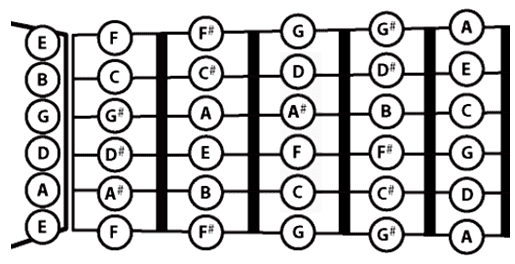
You can also watch for our lessons about flamenco guitar scale and major | minor guitar scale.
The different patterns
So I’m putting below the different patterns of the pentatonic scale with their respective colors. We will then see how they fit together and how to use them to improvise.
The note wit h a “B” corresponds to the Blue Note (or “blues note”).
Pattern 1

Pattern 2
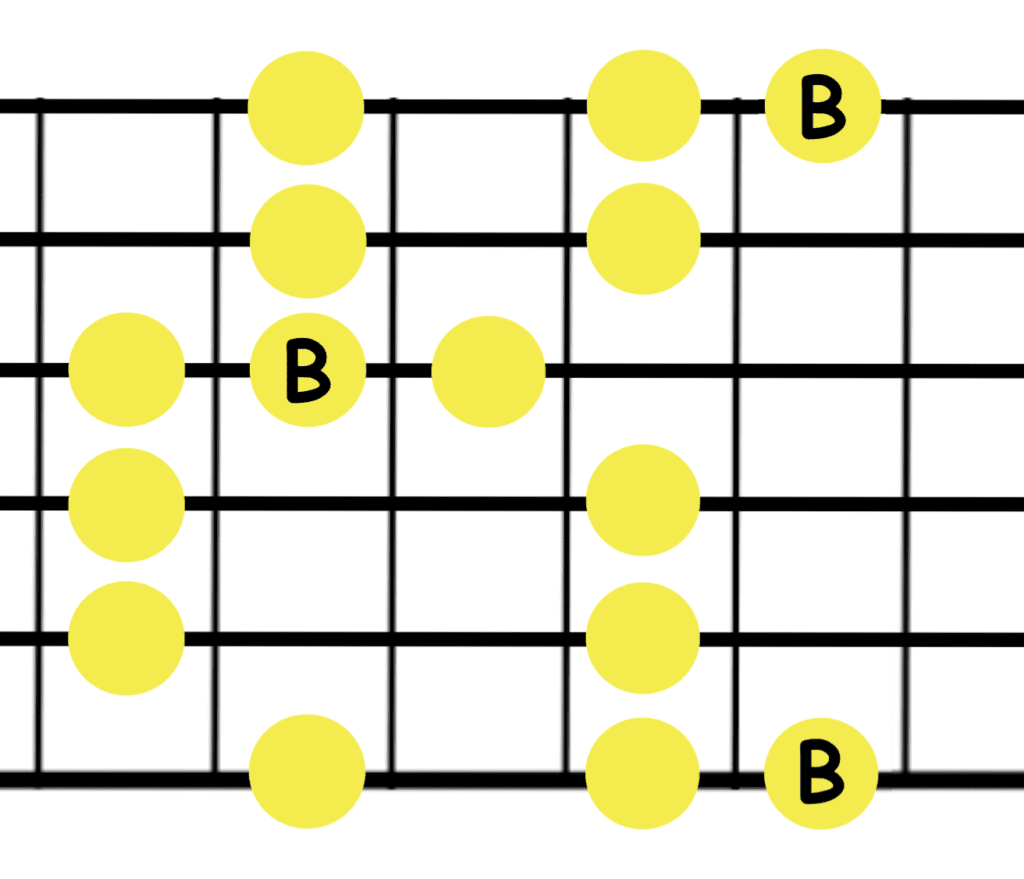
Pattern 3
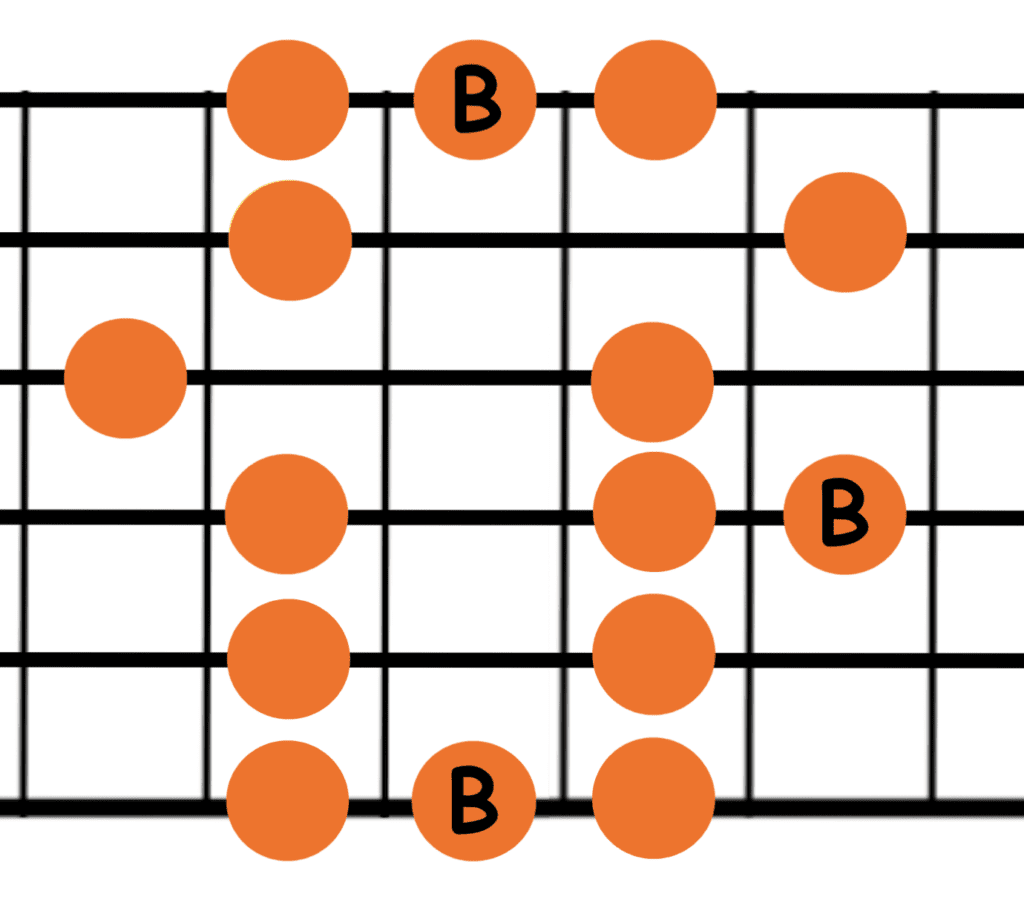
Pattern 4
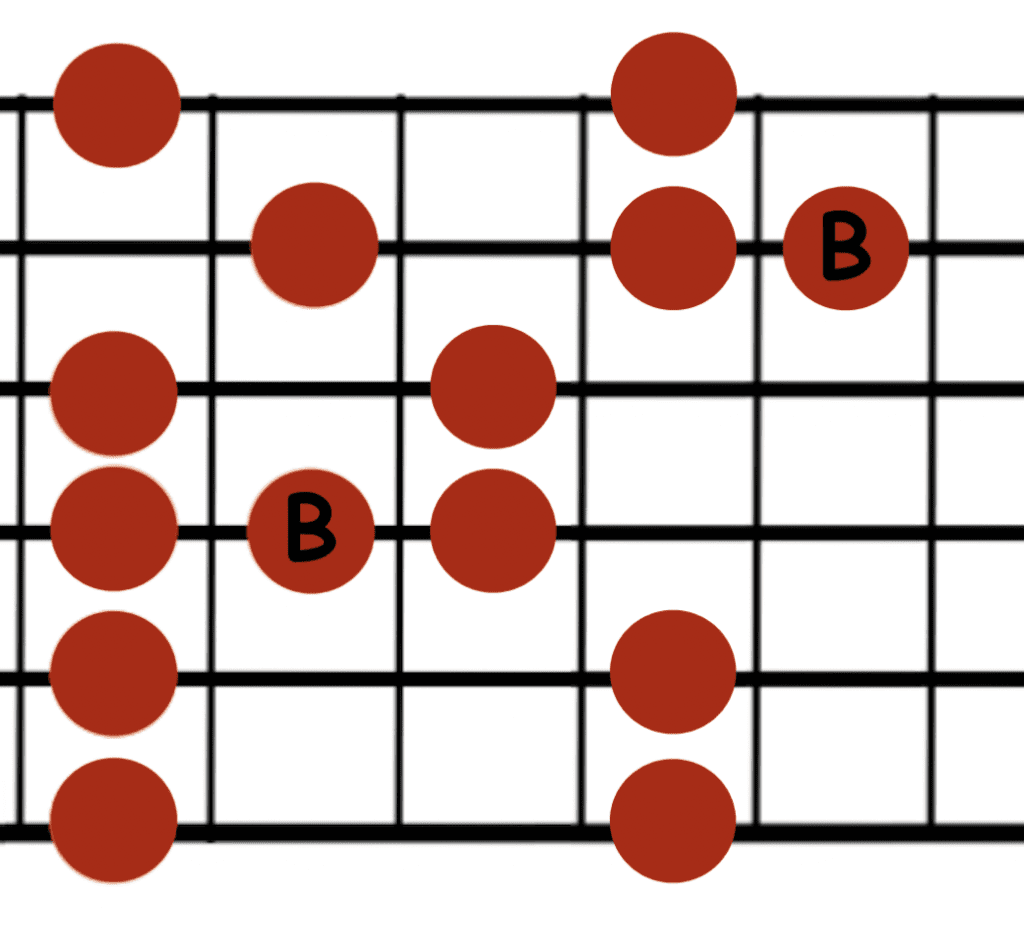
Pattern 5

When and how to play pentatonic scale ?
You will have understood that :
- Each pattern is played from top to bottom from low E to high E (or vice versa)
- You can go from one pattern to another (from one color to another) in the direction of the neck (from left to right). And, for that, it is necessary to respect the order of the colors :

But you will probably ask yourself :
“Ok but where do I start?”
I give you here two situations thanks to which you will be able to find your way and place the different patterns according to the key of the piece.
Situation 1 – Low E string
If the tonic note of your song (i.e. generally the bass of the first chord) is a note played on the first low E string, then you will find your way thanks to the green pattern.
The first note of the pentatonic scale in the green pattern (circled in red below) is then the tonic note of the scale of your piece.
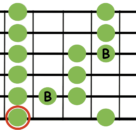
Example – A major pentatonic scale
If your piece is in A (i.e., usually starts with an A), you will find your A chord on the 5th fret :

Then the green pattern will be positioned from the bass of this chord, i.e. will start on the low E string from the 5th fret :
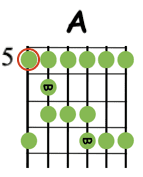
Important :
All this applies whether the chord is major or minor.
Try to improvise with our easy beginners guitar songs.
Situation 2 – A string
If the tonic note of your piece is a note played on the A string, then you will find your way thanks to the red pattern.
The first note of the pentatonic scale in the red pattern (circled in green below) corresponds to the tonic note of the scale of your song.

Example – A pentatonic scale
For this second example and in order for you to understand the logic, we will use the same A chord but this time in a different position.
If your song is in A (that is, generally, if it starts with an A), you will go and find your A chord but this time on the 2nd fret :
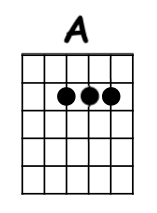
Then the red pattern will be positioned from the bass of this chord, i.e. will start on the low A string played open:

So, if you have understood our example with the two A chords, it is possible to locate yourself in two ways :
- On the low E string with the green pattern
- On the A string with the red pattern
Conclusion : Switching from one diagram to an other
Thus, for the example of the piece played in A (major o minor whatever), the green pattern is located at the 5th fret and the other patterns are intercalated in the same order as on the global pattern, the red pattern being at the beginning of the neck (starting with notes on the open strings),

And if you look again at our global pattern, you can see that the patterns have moved but the order remains the same :

So, when you have in mind this sequence between the colors and you know how to position yourself according to the key of the song, you can move from one scheme to another by going down and up the neck.
Good work !!
